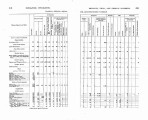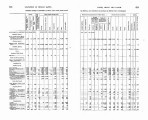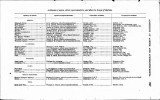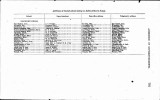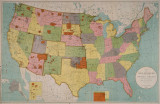| OCR Text |
Show 34 UOMMISSIONER OF INDIAN AFFAIRS. nonresertation schools, directing attention to what physical effect has resulted from the change from barbarous to civilized methods of life, and in case of educated Indians whether the present health of students from nonreservation and reservation schools is similar to that prevail-ing among the whites in the same territory or better, or worse. They were also asked to dwell particularly upon tuberculosis, scrofula, syphilis, and similar diseases among the adult Indians and children and whites living in practically the same environment. Nearly all physicians responded more or less elaborately and intelli-gently to this circular. While many replies and conclusions expressed were antagonistic, a very good idea of general health conditions was obtained. This indicated that prompt steps should be taken to better the health condition of mauy tnbes and to improve hospital accom-modations and dormitories at the schools. Based upon those replies the following general deductions were made: 1. That tuberculosis is more widespread among the Indians than among an equal nnmber of whites. While this statement is denied by some of the physicians, and is cer-traily not true for all of the tribes, still the bulk of the evidence indicates that the Indian is more susceptible to this malady than the white man under like conditions. This is the more remarkable when we remem-ber that mauy of the Indian reservations are situated in regions where climatic conditions least favor the development of the disease, and inde~,d often in just those localities to which tubercular subjects are advised to go in search of health. It is also worthy of note that many Indians lead an active outdoor life, ride horseback, sleep in a tent, and follow generally the injunctions so often laid down for phthfsioal individuals. 2. That the great prevalence of tuberculosis among the Indians is due to the following causes: (a) Failure to disinfect tubercuh sputum. (b) Poor sanitation and lack of cleanliness. (c) Improper and poorly prepmed food. (d) Intermarriage of Indians of the same tribe. (e) Intermarriage of Indians and whites. If) Taking pupils predisposed to tuberculhsis from camp life and confining them in school. (9) Overcrowding in dormitories. (h) Lack of proper medical attention after infection. (i)Th e use of alcohol. Of these causes failure to dieinfect sputum is undoubtedly the most active. The present-day lndin often lives in filthy surroundings. He has no rational notion of disease; he coughs and expectorates with-out regard for the laws of health; the sputum dries rapidly, mixes with the dust, and the germs it contains soon become widely disseminated. Besides the specific poison thus scattered abroad, the effect of the filth |

























































































































































































































